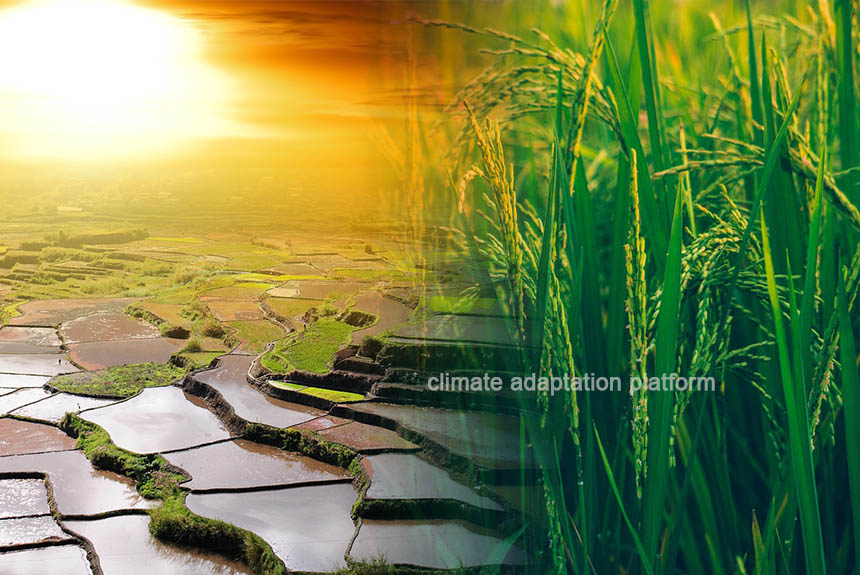Rice is a staple food for over 3.5 billion people, or more than half of the world’s population. It is grown in over 100 countries, and 90% of global production comes from Asia. Over 110,000 cultivated rice varieties vary in quality and nutritional content; after post-harvest processing, rice can be categorised as white or brown. In addition to calories, rice is a good source of magnesium, phosphorus, manganese, selenium, iron, folic acid, thiamine, and niacin, but it is low in fibre and fat (Rice: Importance, 2019).
Rice, cultivated in Japan for over 10,000 years, is not just a crop but a living testament to the country’s rich culture, cuisine, and history. However, the looming threat of climate change casts a shadow over this integral part of Japan’s identity and the staple food of many Asian countries.
The Japan Times reports a stark reality: the extreme heat and low rainfall in 2023 have left their mark on Niigata Prefecture, Japan’s leading rice-growing region.
The result? Chalky and split grains, a significant drop in yield and quality, and a record-low harvest of Japan’s top-quality rice. This is not just a weather anomaly but a clear sign of the climate change threat.
The country has been experiencing consistently high temperatures in recent years, and 2019 and 2023 have been the hottest years since temperature records began.
Japan’s researchers and policymakers are trying to understand its impact on rice production and yield and its implication on the country’s food security as they face the threat of rising temperatures. Food experts believe climate change will unlikely cause a perilous rice shortage in the country, as it will lower the quality of rice and, hence, the farmer’s income.
Japan is confident about its rice sufficiency, but the dip in the quality of rice is a priority for the country. The article notes that today, Japan’s self-sufficiency rate for rice is nearly 100%, compared with 38% for food overall, on a calorie basis.
Japanese farmers will be forced to adapt and change to heat-resistant rice varieties to maintain high-quality rice production. Otherwise, they could lose 10% of their income from a drop in rice quality from first-grade to second-grade rice. However, switching to heat-resistant varieties also comes with a risk, mainly because consumers would be willing to trade their favourite rice variety for the new heat-resistant ones.
A 2017 study shows that the optimum growth temperature of rice is between 25°C and 35°C. Any temperature outside this range – colder and higher temperatures, could affect crop growth and yield. The author notes that the study’s results can help inform climate adaptation planning for climate-resilient rice production.
The Japan Times articles reveal a glimmer of hope- the country is not sitting idly by. It is actively implementing various adaptation measures to combat the impacts of increasing temperatures on rice crops. As of 2022, heat-resistant rice varieties constituted roughly 13% of rice grown in Japan, with plans to expand this share to 18% by 2026. This is a clear testament to Japan’s determination to protect its rice production from the clutches of climate change.
A 2023 study published in Earth’s Future modelled climate change impacts, under the RCP 4.5, described by the IPCC as an intermediate scenario where emissions peak around 2040, then decline, shows that climate adaptation strategies can reduce significant crop yield losses due to warming temperatures.
Warming temperatures will likely decrease global yields of the major staple crops maise, rice, wheat, and soybean by 3%–7% per °C warming on average. Without adaptation under RCP4.5, all crops are expected to experience average global yield losses of 6%-21%.
Climate adaptation alleviates this average projected loss by 1-13 percentage points. For maise and rice, irrigation method and cultivar choice were the adaptation types predicted to prevent significant yield losses, respectively.
When climate adaptation practices are applied, some areas included in the simulation –consisting of over 8000 sites- are expected to experience more yields, especially at high northern latitudes. The study says that these results reveal the critical importance of implementing adequate adaptation strategies to mitigate the impact of climate change on crop yields.
Sources:
Fukagawa NK, & Ziska LH. (2019). Rice: Importance for Global Nutrition. PubMed. Retrieved from https://pubmed.ncbi.nlm.nih.gov/31619630/
Giseburt, A. (2024, April 28). Climate change, chalky grains and the risks for Japan’s rice farmers. The Japan Times. Retrieved from https://www.japantimes.co.jp/environment/2024/04/28/climate-change/rice-climate-change-risk/
Abramoff, R., Ciais, P., Zhu, P., Hasegawa, T., Wakatsuki, H., & Makowski, D. (2023, March 28). Adaptation Strategies Strongly Reduce the Future Impacts of Climate Change on Simulated Crop Yields. Earth’s Future. Retrieved from https://agupubs.onlinelibrary.wiley.com/doi/10.1029/2022EF003190
Rehmani, M. I. A., Ding, C., Li, G., Ata-Ul-Karim, S. T., Hadifa, A., Bashir, M. A., … & Ding, Y. (2021). Vulnerability of rice production to temperature extremes during rice reproductive stage in Yangtze River Valley, China. Journal of King Saud University-Science, 33(8), 101599.



Leave a Reply